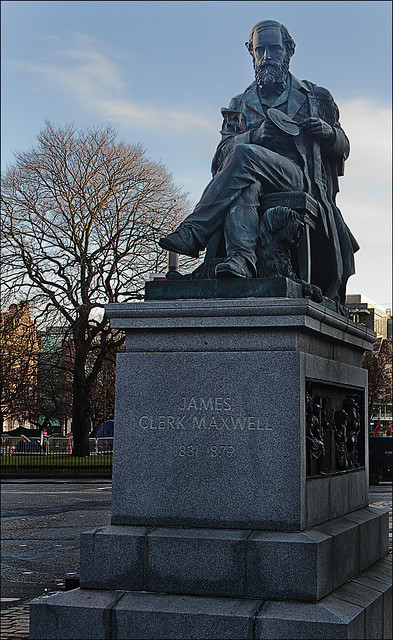We all have our demons, and James Clerk Maxwell was no different. While he and I weren’t close, I have gotten to know one of his demons over the past 13 years. Okay, so in all seriousness, James Clerk Maxwell is a well-known Scottish Mathematician who throughout his life discovered a way to break the second law of thermodynamics and that became known as Maxwell’s Demon. So what exactly was his demon?

It was in 1867 when Maxwell wrote a letter and described his first encounter with the theory. In this letter, he wrote he spoke of a “finite being” that would control a massless door that separated two chambers of gas. This door would be opened and closed to permit a faster-moving molecule into the fast chamber, which also carried more heat, and then the slower-moving particles from the hot chamber into the slow chamber which was also cooling constantly. Because the velocity of a gas is dependent on the kinetic temperature of the molecule and its surrounding molecules. Since the demon was separating the hot and cold molecules it would permit one chamber to warm up while the other chamber cools down below ambient air conditions. This in turn decreases the total entropy of the system yet doesn’t do any work. Thus, violating the great second law of thermodynamics.
It wasn’t Maxwell that related this “finite being” to a demon, instead it was William Thomson, 1st Baron Kelvin who we associate absolute temperatures with in order to pay our respects of all his work. Lord Kelvin originally, published the thoughts in response to letters that Maxwell had written to other scholars. Kelvin did not mean for this to be a correlation with the malevolent being instead to be related to a daemon from Greek mythology which is a supernatural being who performs work behind the scenes. So why do we connect Maxwell’s demon to anything to do with an Intelligent Compressed Air Product?
In the spirit of Maxwell’s Demon, the separation of air molecules into a cold and hot air stream, without work being done can be directly related to a Vortex Tube. The Vortex Tube does exactly this, as an air stream enters the compressed air inlet, the air enters into the generator chamber where it is spun at very high speeds and sent down what is called the hot tube. As the air is spinning and traveling, it separates into a hot and cold air stream. The cold air is then sent down and out the cold end of the Vortex Tube while the hot air stream is exhausted out the hot end.

The percentage of cold air exit vs hot air exit is deemed the cold fraction and effects the temperature drop and rise for the respective stream of air. This gives us the ability to slightly control the demon, and thus we learn how to make this supernatural being work for us, and thus we never break the second law of thermodynamics, it’s actually this demon.

In all seriousness, this thought experiment still continues to be a talk of physicists, mathematicians and scholars. They utilize Vortex Tubes in experiments to better understand how Maxwell came up with this thought and just how can they control this supernatural being.
If you would like to discuss how to utilize a Vortex Tube in your application or any of the EXAIR product lines, contact any Application Engineer today.
Brian Farno
Application Engineer
BrianFarno@EXAIR.com
@EXAIR_BF


